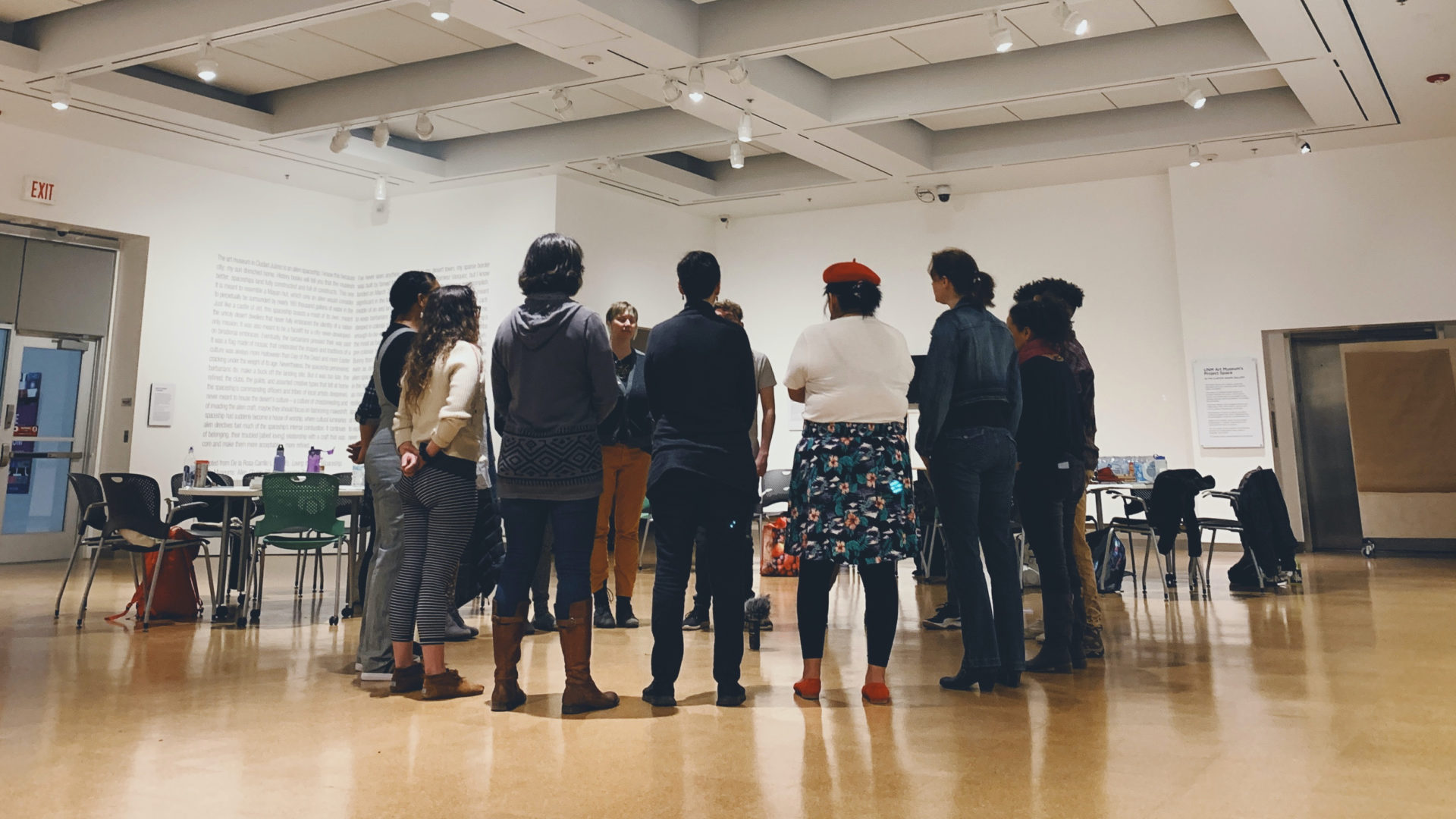There Must Be Other Names for the River is a music composition for singers and instrumentalists to embody streamflow data from six points along the Rio Grande. In this form it is a web-based sound installation and community space engaging the history, present, and potential futures of the river.
Reporter Laura Paskus wrote, “In early April, when the Middle Rio Grande should have been rushing with snowmelt, New Mexico’s largest river dried. It started through Bosque del Apache National Wildlife Refuge, spreading to more than 20 miles by now. The Albuquerque stretch may dry come June or July, which would mean some 120 miles dry altogether this summer … To see this happening in spring is shocking. But we shouldn’t be surprised. We knew this could happen.” (From Paskus’ article “A dry Rio Grande in Springtime isn’t normal. but it will be.“) That was in 2018. In 2020, the same thing happened. Drought is also expected for the summer of 2021.
Today, climate change and extractive projects along the river are contributing to greater threat of drought as snowpack is decreasing, evaporation is increasing, and monsoons are less common. The weaponization of the river as a border is a threat to lives on all sides. We too often see the river as a division rather than an invitation for unification. During the pandemic, we’ve experienced a social isolation which has led many of us living near the river to find an embrace in the shared bounty and responsibility of the these keystone ecosystems. The river connects us as it flows through these lands.
To bring awareness to these critical issues, Marisa Demarco, Dylan McLaughlin, and Jessica Zeglin have developed a web-based sound installation and gathering space for visitors to listen to the voices of the river and contribute their own.
This sound installation guides visitors along the length of the Rio Grande where they hear the songs of singers emerging from points along its 1,800 mile length. Each singer works from a graphic score representing nearly 50 years of streamflow data at a specific point along the river. Singing from this historical reference as well as their personal relationships, hopes and fears for the river, the singers—Monica Demarco, Ryan Dennison, Kenneth Cornell, Antonia Montoya, Mauro Woody and Marya Errin Jones—envision and embody possibilities for the river into the future, further than scientific studies currently predict.
Accompanying the installation is Tributaries, a community space where visitors can contribute their own response to the streamflow data. Tributaries consists of stories, songs and retellings of the memories and hopes for the future of the Rio Grande. Tributaries recognizes our collective investment in the river and provides a virtual meeting point for neighbors in a time of physical distancing, to amplify and share the importance of the river we all feel.
Together, this sound installation and community space asks us to actively consider and contribute to the trajectory of this lifeline in the desert.
This piece was inspired by the environmental reporting of Laura Paskus. In November 2020, Laura talks to the artists in a drying Rio Grande riverbed about what is happening with the river today:
Artists
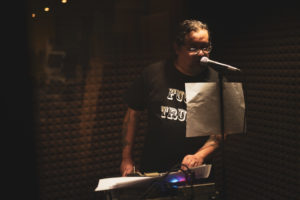
Kenneth Cornell enjoys sonic sorcery. He primarily produces and participates in sound installation and performance, and dabbles in video art and found sculpture. Focusing on social, political and environmental topics/controversies, he enjoys solo as well as collaborative efforts. His work has been included at the Coconino Center for the Arts (Flagstaff, AZ), Museum of Contemporary Native Arts (Santa Fe, NM), Carlsbad Museum & Art Center (Carlsbad, NM), University of New Mexico Art Museum, Graft Gallery, 516 Arts, and National Hispanic Cultural Center (Albuquerque NM), as well as the Neue Slowinishe Kunst State Folk Art Biennale (County Clare, Ireland). Kenneth professes to music-obsession behavior.
Kenneth Cornell sings below Elephant Butte Dam.
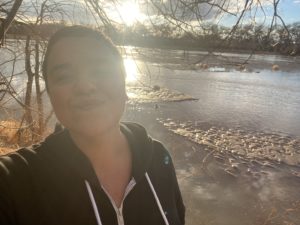
Marisa Demarco chases news, makes art and plays music. She often works in sound—abstract and otherwise—as a means of visceral connection. She’s seeking an MFA from the University of New Mexico’s Experimental Art + Technology program. She’s a longtime journalist, approaching two decades in the field full-time.
Right now, she spends most days getting news on the radio airwaves and trying to remember to eat something or go on a walk. But when there’s no pandemic, she likes to organize performances and gatherings, sing, build worn sculptures, play bass and burn her fingers with soldering irons as she constructs sound-generating electric instruments.
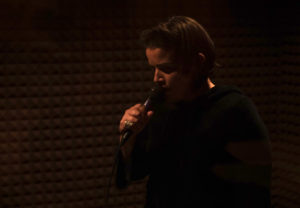
Monica Demarco is a composer and musician from Albuquerque, New Mexico. Demarco received her degrees in piano performance and theory/composition from the University of New Mexico. Demarco has a fascination with the connection of physical movement and sound. Many of her performances have included her work as an aerial dancer and martial artist. Among the tools she uses are cello, bass, piano, vocals and a variety of electronics.
Monica Demarco sings the Headwaters.
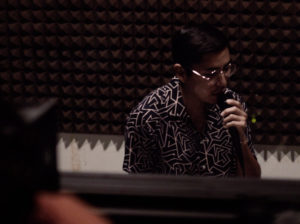
Ryan Dennison is a Diné Artist and musician from Tohatchi, NM. Their work reflects queer brown boy love, dreams, intimacy and entanglement; While negotiating space in land poems and queer body constellations of intimacy. Dennison’s influence in performance art and music composition has been present for more than 6 years.
Ryan Dennison sings the Albuquerque area.
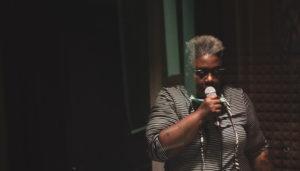
Marya Errin Jones is a writer, vocalist and theatre artist, who uses lo-fi puppetry, loop pedals, paper, fabric, photocopiers and other forms of technology to tell her stories. She has performed her original works throughout the U.S., Europe and South America. Her hybrid works of theatre are often based in ghost-guided collaborations, crossing timelines and dimensions, presented in layers of physical and vibratory resonances both devised and improvisational. Born in the Midwest, raised in the South, Marya is a graduate of the University of New Mexico and the Dell’Arte International.
Marya Errin Jones sings the Mouth of the River at the Gulf of Mexico.
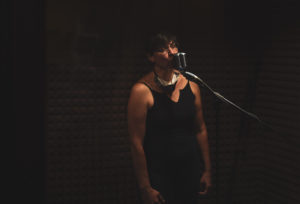
Antonia Montoya aka Alonerly is a mental health therapist, traditional healer and musician. One woman amidst layers and layers of bass, vocals, electronic drum beats. Her music brings the longing vibrations of New Mexico from its beginnings as a high desert buried under the ocean to its burning future within the sun.
Antonia Montoya sings Juárez / El Paso.
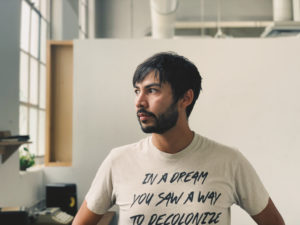
Dylan McLaughlin engages the poetics and politics of landscape formation and human affect through multi-media installation, interactive, and performative works. He received his BFA in New Media Art from the Institute of American Indian Arts, and is currently working toward an MFA in Art & Ecology at the University of New Mexico.
When not zooming around town on his moped, Dylan McLaughlin can be found creating artworks that engage the poetics and politics of landscape formation and human affect.
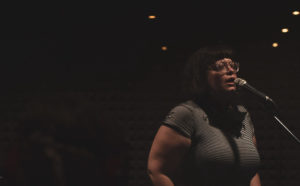
Mauro Woody is a Latinx musician and performance artist. Born and raised in Albuquerque, she has been a collaborative and solo artist in the arts and music scenes since 2008. Woody’s work incorporates the physical ideas and emotional concepts of rasquache and rasquachismo to create sonic landscapes/sound portals of the high desert. She will be receiving her BLA with an emphasis on creative practices in the community in Spring 2021.
Mauro Woody sings Big Bend.
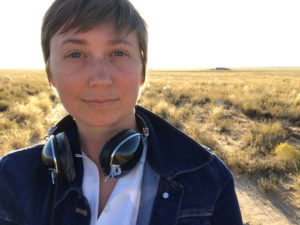
Jessica Zeglin is an artist, gardener, and teacher from the rural Midwest, now based in the middle Rio Grande valley. Her works focus on human relationships with each other and with the ecosystems that surround and sustain us. She is fascinated with the ability of sound to create shared transformative experiences and with the ability of a drawn line to become a record of gesture and movement. She practices drawing and creates place-based textiles, installations, and soundscapes.
Contact the artists at othernamesfortheriver@gmail.com.
Acknowledgments
We dedicate this piece to the Rio Grande and its people; past, present, and future.
This piece was conceptualized and created on Tiwa land, known currently as Albuquerque, New Mexico.
Big thanks to the University of New Mexico Art Museum and the University of New Mexico Center for Environmental Arts and Humanities for their generous support of this work. Particular thanks to Arif Khan, Traci Quinn, Lee Montgomery, Nina Elder, and Subhankar Banerjee, who supported this work from its inception as a student project through its multi-year development into a digital installation. Thank you to Devin Geraci and all UNM Art Museum staff for their assistance, and to James Johnson and Mindshare Labs for website development. We would also like to thank 516 Arts—Suzanne Sbarge, Claude Smith, Viola Arduini, and Mackensie Lewis—and the National Hispanic Cultural Center for their support of previous iterations of this work. Much gratitude and thanks to Kevin Michael Maestas and New Mexico PBS for allowing us to use Maestas’ aerial footage of the dry river in the exhibition. Thank you to David Beining and the University of New Mexico ARTS Lab for providing a safe studio recording space during the pandemic, and Manny Rettinger and Liz Rincon from the Music Department for helping with equipment during live performances. Thank you to Roman Garcia at KUNM Radio for loaning us microphones and other recording equipment.
Thank you to Laura Paskus, whose environmental reporting inspired this work.
Thank you to musicians Monica Demarco, Ryan Dennison, Antonia Montoya, Mauro Woody, Jessica Chao, Kenneth Cornell and Marya Errin Jones for their profound interpretations of the graphic score.
Thank you to the Albuquerque singers who kicked off what in pre-pandemic times was to be an in-person version of this work, keeping us warm with your song during a cold day along the river: Celia Ameline, bug carlson, Hannah Colton, Austin Fisher, nicholas b jacobsen, Becki Jones, Keegan Kloer, Lazarus Letcher, Ana Alonso Minutti, Tanya Nuñez, Peri Pakroo, Quela Robinson, Anna Rutins, and Maggie Siebert.
As we listen to this piece, we hold Hannah Colton and her community, friends and family closely in our hearts. We love and miss you, Hannah.
And always, thank you to the listeners, singers, participants, and contributors that make this piece live.
